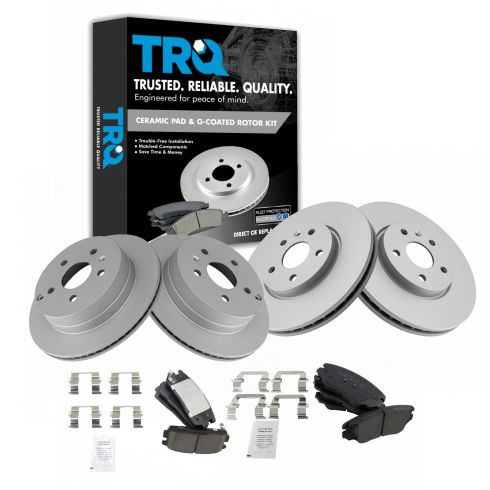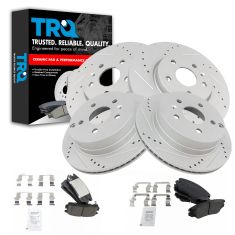1ABFS05936-2010-17 Chevrolet Equinox GMC Terrain Front & Rear Ceramic Brake Pad & Rotor Kit TRQ BKA14662

Replaces
2012 GMC Terrain Front & Rear Ceramic Brake Pad & Rotor Kit TRQ BKA14662

Product Reviews
Loading reviews
5.00/ 5.0
4
4 reviews
Quality Parts
February 4, 2022
I was skeptical about the quality at first. Installation went smoothly & easy. I would recommend this rotor kit to anyone. I had no problems at all.
November 30, 2023
Good stuff
April 15, 2024
Very good fast delivery good price
Great experience.
June 16, 2024
Very happy with this purchase. Very fast and FREE shipping, the parts were of great quality and exact fit. Time will tell how the wear but so far I would recommend.
Customer Q&A
No questions have been asked about this item.
GMC is a registered trademark of General Motors Company. 1A Auto is not affiliated with or sponsored by GMC or General Motors Company.
See all trademarks.
















